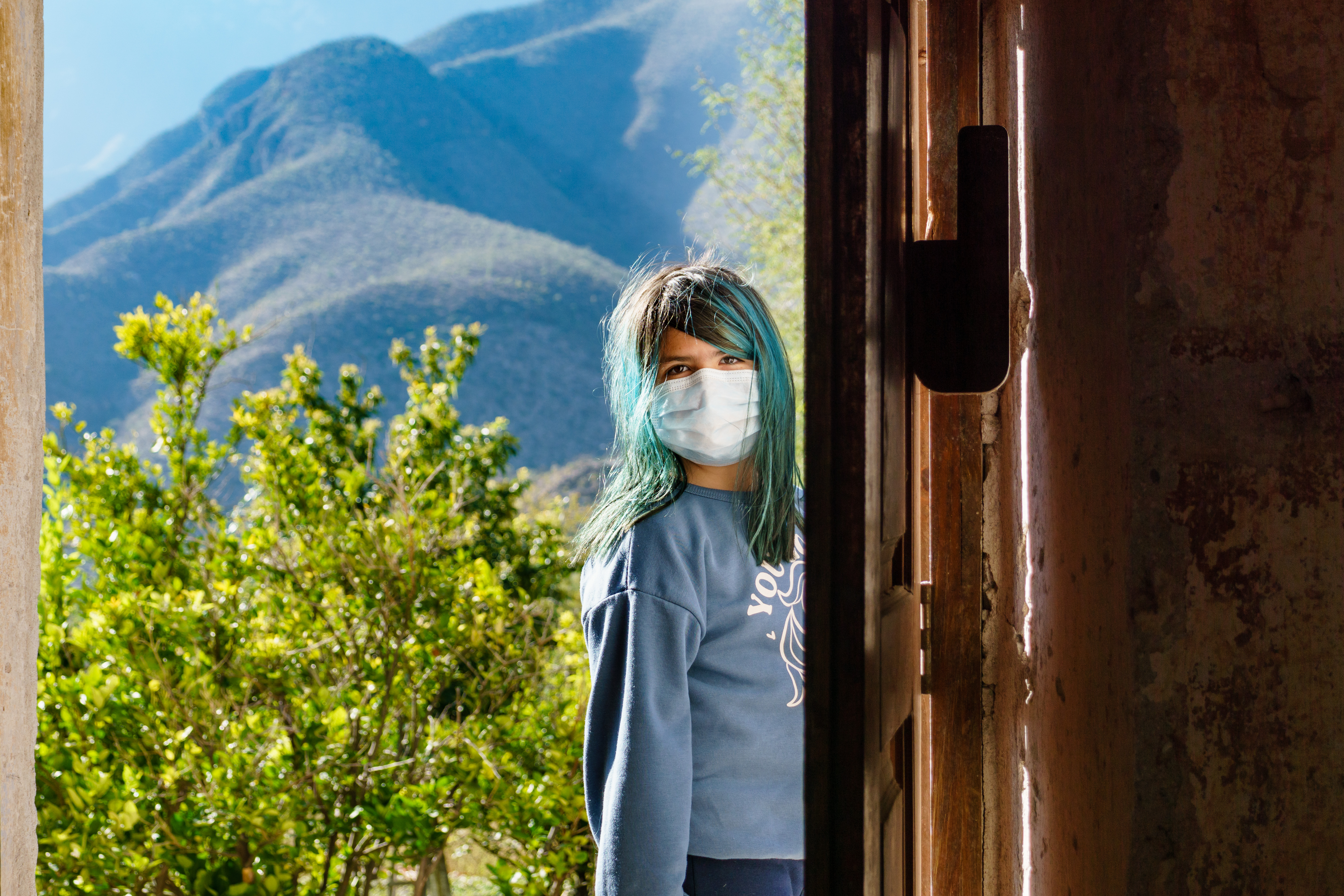16 February 2021
Your DSLR or mirrorless camera probably came with a “kit lens”, a lens that goes from wide-angle to short telephoto and probably f/3.5 or f/4 at the wide end and f/5.6 at the narrow end.
In all lenses manufacturers have to balance cost, size, optical quality, aperture, autofocus speed, robustness, and features like image stabilization. There are exceptions, but in kit lenses, cost often seems to be the first priority and size often the second.
Kit lenses don’t get much respect. Stu Maschwitz says you should “literally throw away the [kit] lens” and get a 50 mm f/1.8 prime. I’m not going to say you shouldn’t get a prime — you should — but I will argue here that you shouldn’t get too hung up on gear. You can take great photographs with a kit lens!
Kit Lenses are Pretty Good
Perhaps the first thing to note is that you can make decent photographs with a kit lens.
A kit lens places limitations on your photograph, but subject, composition, and light are often more important. For example, here are some photographs I’ve taken with kit lenses; I’m not going to claim that these are stunning photographs, but I will claim that their deficiencies are due to the photographer and not the lens.
Kit Lenses Do Have Limitations
Let’s not get carried away; kit lenses do have significant limitations. Let’s consider two and strategies to mitigate them.
Depth of Field
The slow aperture of a kit lens means it is more difficult to blur backgrounds with a shallow depth-of-field. If you want to achieve that, it’s best to be at the long end of the zoom, have the aperture wide open, be as close as possible to the subject, and have the background as far away as possible. Sometimes this requires moving the subject away from the background.
Here is an example that works fairly well. Notice that the subject’s head and shoulders fills the frame and the background is tens of meters away.
Here is a second example that doesn’t work quite so well in terms of blurring the background, although I like it nevertheless. The main difference is that in this not even the subject’s torso fills the frame. If I’d wanted to really blur the background here (and I didn’t), I would have needed a much faster less.
Astrophotography
The slow aperture is also an impediment for astrophotography, where you want to capture as much light as possible and exposure times are limited by sidereal motion. Still, it’s not impossible, especially at the wide end and with the aperture wide open. Here is an example, showing a wild fire and the Galactic center.

Astrophotography with a Kit Lens Sony α6000 and Sony E PZ 16-50 mm f/3.5-5.6 16 mm | f/3.5 | 20 s | ISO 3200
The noise in this is not great, but there are a couple of ways this can be improved.
First, by stacking multiple images in Photoshop or a specialized program like Starry Landscape Stacker, Sequator, or Deep Sky Stacker. Let’s consider a typical kit zoom used at the wide end at f/4. If you stack 2, 4, 8, or 16 images, you have the equivalent of f/2.8, f/2, f/1.4, or f/1, You can see the power here; how many wide-angle primes are f/1? Compare the following photos. The one on the left is a single 15 second image with a kit lens and the one on the right is a stack of 16 × 15 second images made with Starry Landscape Stacker. There is dramatically less noise in the stack.


Astrophotography with a Kit Lens Sony α6000 and Canon EF-S 18-55 mm f/4-5.6 18 mm | f/4 | 15 s (left) and 16 × 15 s (right) | ISO 3200
(The stack shows a some coma in the corners and trailing from sidereal motion. Rather than stack 16 images at f/4 and 15 seconds, it might have been better to stack 64 at f/5.6 and 8 seconds.)
Second, by using an advanced noise-reduction. Here is a comparison of a zoom on the previous photo of the wild fire with noise reduction in Lightroom (left) and Topaz Denoise AI (right).


Astrophotography with a Kit Lens
Sony α6000 and Sony E PZ 16-50 mm f/3.5-5.6
16 mm | f/3.5 | 20 s | ISO 3200
Noise reduction in Lightroom (left) and Topaz Denoise AI (right)
Kit Lenses in the Context of Primes
Many people look to improve on their kit lens with a couple of faster primes, often a 35-50 mm equivalent lens and a 75-100 mm equivalent lens. I’ve followed this route twice. First, after getting a Panasonic GM5 with a 12-32 mm f/3.5-5.6 kit lens, I got a 20 mm f/1.7 prime and a 50 mm f/1.4 prime. Later, after getting an Sony α6000 with a 18-55 mm f/4-5.6 kit lens, I got a 24 mm f/2.8 prime and a 50 mm f/1.8 prime.
Once you have primes, the kit lens tends to get a little neglected. Nevertheless, I’d assert that it often continues to be useful. Here are some examples.
Wide-Angle
Kit lenses typically reach 24-28 mm equivalent focal length (16-18 mm for APS-C lenses and 12-14 mm for MFT). So, unless you have an wide prime or zoom, the kit lens continue to be useful as a wider option.
I often go out with a 24 mm f/2.8 and 50 mm f/1.8 for my APS-C body. However, my kit lens continues to be useful as, effectively, an 18 mm f/4. For example, the following photograph of my kids would have been impossible with my 24 mm, short of using stilts, but was possible with my 18-55 mm at 18 mm.

Wide-Angle with a Kit LensSony α6000 and Canon EF-S 18-55 mm f/4-5.6 IS STM 18 mm | f/11 | 1/60 s | ISO 100
Single-Lens
There are times when you only want use a single lens, for convenience or lightness. Sometimes a single prime is appropriate, but other times the flexibility of a kit lens is better.
For landscape photography, the slow aperture of a kit lens is often not a disadvantage but its flexibility in focal length can allow you to avoid changing lenses in the field, which helps keep dust off the sensor. This is especially important at the slower apertures typically employed for landscape photography which increase the prominence of dust shadows.

Seascape Photography with a Kit LensSony α6000 and Canon EF-S 18-55 mm f/4-5.6 IS STM 18 mm | f/11 | 1/1000 s | ISO 100
Furthermore, when I’m out with my kids, my primary role is “father” not “lifestyle photographer”. I often don’t have a time to change lenses, and so my options are either a single faster prime or a slower kit lens. Depending on how I anticipate the day unfolding when I pack my bag, sometimes I’ll go with a 24/2.8 on my α6000 (typically better for people) and sometimes I’ll go with my 18-55 mm f/4-5.6 kit lens (typically better for landscapes and architecture).
This is of course the idea behind “travel zooms”, although they extend to longer focal lengths and are often slower and softer than kit lenses. Conversely, with a decent kit lens, you trade optical quality and aperture for zoom range.
Stabilization
Many kit lenses have optical stabilization and many primes do not. Optical image stabilization can be a great benefit when the light level is low.
Consider these photographs, made with a stabilized kit lens and without a tripod. Stabilization allowed me to use shutter speeds of 1/5 and 1/6 second and so achieve ISO 100. With an unstabilized lens, I would have had to use exposures of perhaps 1/50 and 1/80 and so obtained noisier images with ISO 1000 and 1250. I could have achieved ISO 100 with an unstabilized f/2 prime, but it would not have given the required depth-of-field.

Low-Light Photography with a Kit LensSony α6000 and Canon EF-S 18-55 mm f/4-5.6 IS STM 31 mm | f/5.6 | 1/5 s | ISO 100

Low-Light Photography with a Kit LensSony α6000 and Canon EF-S 18-55 mm f/4-5.6 IS STM 54 mm | f/5.6 | 1/6 s | ISO 100
Of course, if your camera has in-body image stablization, you gain this advantage even with primes, and if you kit lens is not stabilized, then you don’t have it even with the kit lens!
Which kit lenses have image stabilization? Almost all relevant current kit lenses, with the notable exceptions of the Canon EF-S 18-55 mm f/3.5-4.5 III (the “IS STM” version does have image stabilization but the “III” does not) and the Nikon AF-P DX 18-55 mm f/3.5-5.6G (the “VR” version does have image stabilization, but the version without “VR” does not). Olympus kit lenses also do not have image stabilization, but this is irrelevant as all Olympus bodies have in-body image stabilization.
Taking One for the Team
You can buy a second-hand kit lens for typically about $100, which is a lot less than many primes or more capable zooms. So, the kit lens can be used in situations in which one would not wish to risk a more expensive lens. If I’m getting on a boat or a horse, I tend to use my kit lens.
© 2021 Alan Watson Forster




